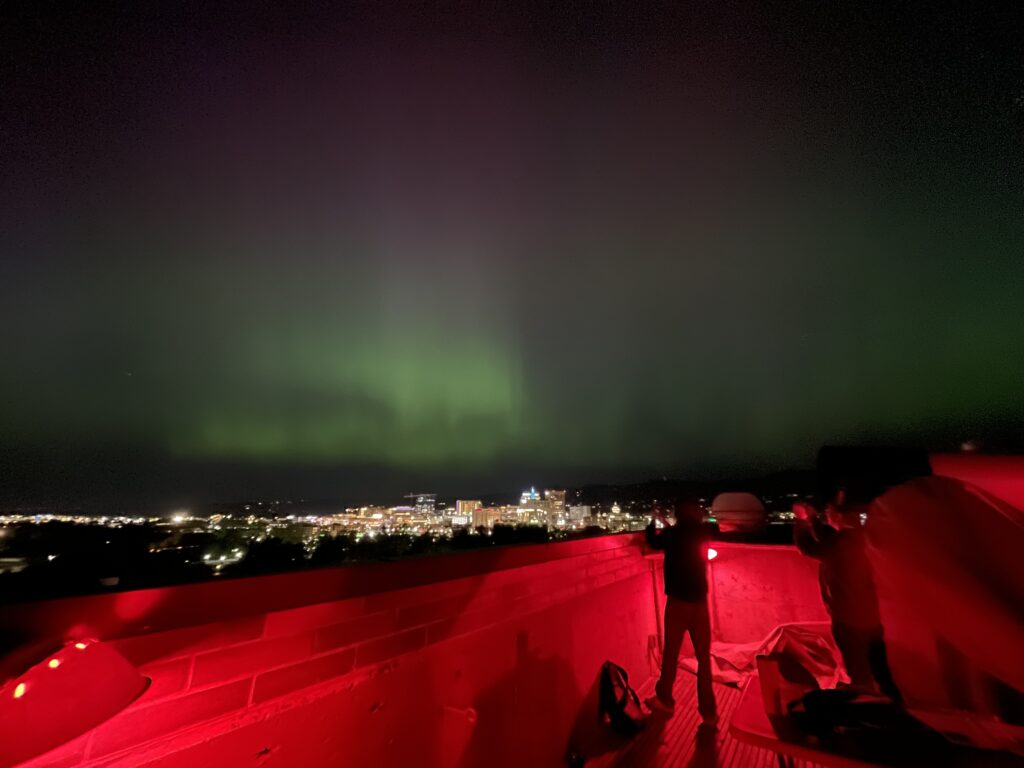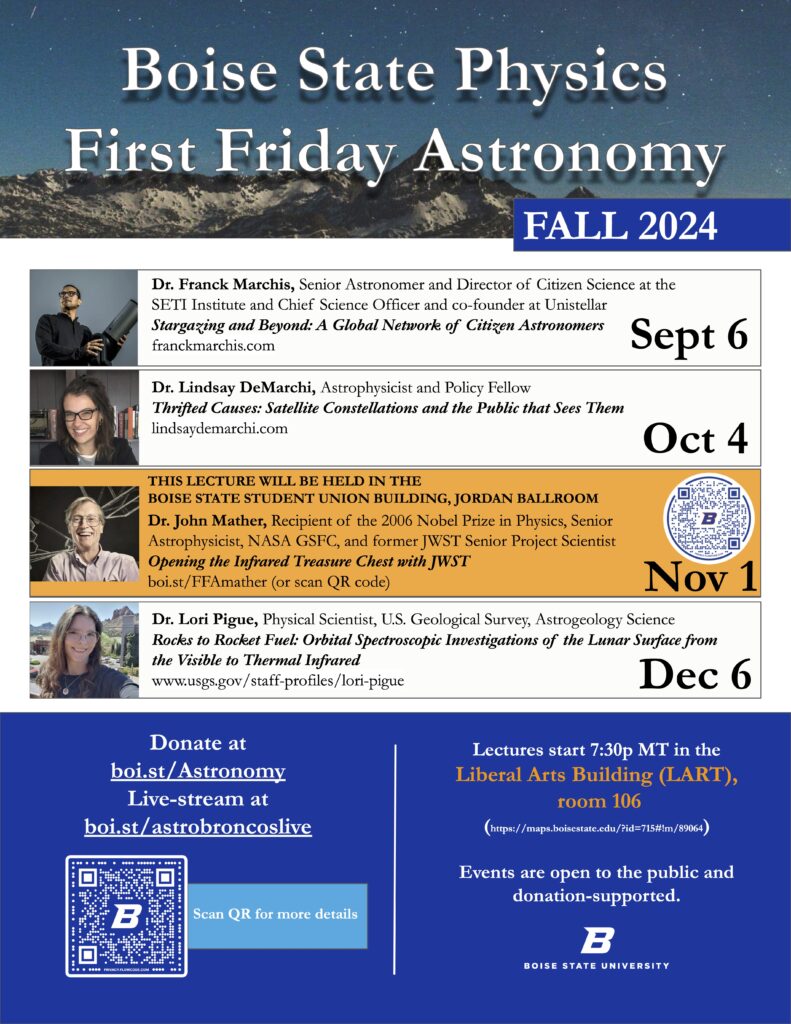Among different fields of science, astronomy has a unique history of citizen science projects. In the last few decades, the advent of user-friendly software and web infrastructure, as well as off-the-shelf research-grade instrumentation, has led to a golden age of citizen science astronomy. Opportunities for amateurs to contribute meaningfully to astronomical research have never been more plentiful.
Continue Reading
An usually active Sun has given us some especially brilliant and visible Northern Lights in recent months. For Boise State Physics’ July 2024 First Friday Astronomy event, we’ll host Dr. Elizabeth Macdonald, director of NASA’s Aurorasaurus project. In preparation for that event, I’ve written this short primer on the science of the Northern Lights.
Continue Reading
The advent of increasingly sophisticated, commercial-grade astronomical hardware and software is democratizing science in a profound way. Citizen scientists have helped find planets in other solar systems, classify galaxies, and spot supernovae. Closer to home, citizen scientists are helping unlock the mysteries of our own solar system through the science of occultations.
Continue Reading